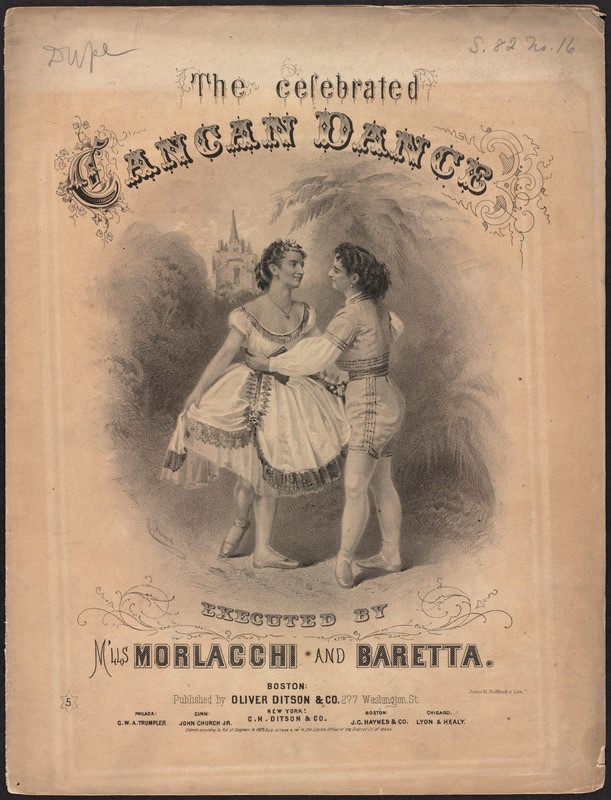“All the girls in Paris France Love to do the Can Can Dance.”¹ The dance and music is strongly associated with the artist Henri de Toulouse-Lautrec. He portrayed the dancers and their dance halls in many of his posters. As a result, people today may associate the cancan with Paris of the 1890s.
The cancan in the 1890s was characterized by an ensemble of female dancers performing high kicks, using their hands to move the skirt around the legs, and showing off their undergarments. It was performed by professional dancers on stages for audiences. When the dance originated in the 1830s, it was performed by men and women dancing together in groups of four couples (a quadrille). The cancan derived itself from the galop, a dance known for its lively steps like a horse’s gallop with two beats to the measure. At some point, some of the men started adding high kicks to these steps. Before long, the female partners copied their male partners’ moves, and things got more interesting.
The cancan was also known as the quadrille naturaliste, and would usually be danced by three women and one man. Sometimes there would be four women, with two of them dressed as men. Each dancer had a turn at improvising dance solos. Dancers would sometimes perform the trick of kicking a man’s hat off the top of his head as part of their solo.
The music used for accompanying the dancing was either written as a galop or a cancan, since both are written in 2/4 time. The work that most people today associate with the cancan is in fact a galop. Written by Jacques Offenbach, the “Infernal Galop” is from the opera Orpheus in the Underworld. Offenbach did go on to write some cancans, as did many other composers. The library has examples of some of these works for people to look at in the library.
Interested in seeing what the audiences would have seen from dancers at the turn of the century? Watch this short video from the Library of Congress that stars the vaudeville dancers, the Franchonetti Sisters.
CDs
¹ “Can You Can Can” by Richard Purlmutter. From Beethoven's Wig
Printed Music
Feuer and Martin Present Cole Porter's Can-Can
Books
Streamed Music
“Cancan” from Gaîté Parisienne, Jacques Offenbach , opens a new window
“Cancan Grand-Mondain” from La Belle Excentrique, Erik Satie, opens a new window



Add a comment to: Can You Do the Cancan?